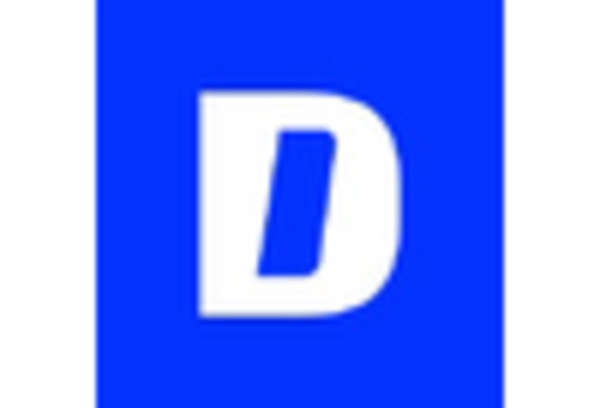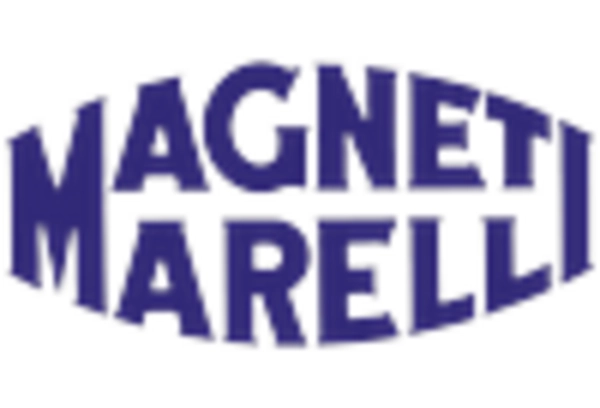Rising Demand for Fuel Efficiency
The Crankshaft Sensor Market is significantly influenced by the rising demand for fuel efficiency among consumers and manufacturers alike. As fuel prices fluctuate and environmental concerns grow, automotive companies are compelled to develop vehicles that maximize fuel economy. Crankshaft sensors play a crucial role in optimizing engine performance, thereby contributing to improved fuel efficiency. According to recent data, vehicles equipped with advanced crankshaft sensors can achieve up to 15% better fuel economy compared to older models. This trend is likely to propel the Crankshaft Sensor Market forward, as manufacturers increasingly adopt these technologies to meet regulatory standards and consumer preferences. Additionally, the push for hybrid and electric vehicles further emphasizes the need for efficient engine management systems, which rely heavily on accurate crankshaft sensor data.
Increasing Vehicle Production Rates
The Crankshaft Sensor Market is benefiting from increasing vehicle production rates across various segments, including passenger cars, commercial vehicles, and electric vehicles. As manufacturers ramp up production to meet consumer demand, the need for reliable and efficient crankshaft sensors becomes paramount. Recent statistics indicate that global vehicle production is expected to reach over 100 million units annually, which directly correlates with the demand for crankshaft sensors. This growth is likely to stimulate investments in sensor technology and manufacturing capabilities, thereby enhancing the overall market landscape. Additionally, as automakers focus on integrating advanced technologies into their vehicles, the Crankshaft Sensor Market is expected to evolve, with a greater emphasis on precision and performance in sensor design.
Growth of the Automotive Aftermarket
The Crankshaft Sensor Market is poised for growth due to the expanding automotive aftermarket sector. As vehicles age, the need for replacement parts, including crankshaft sensors, becomes more pronounced. The aftermarket segment is projected to grow at a steady rate, driven by an increasing number of vehicles on the road and a rising awareness of vehicle maintenance. This trend suggests that the demand for high-quality crankshaft sensors will remain robust, as consumers seek reliable components to ensure optimal vehicle performance. Furthermore, the rise of e-commerce platforms has made it easier for consumers to access replacement parts, thereby enhancing the visibility and availability of crankshaft sensors in the aftermarket. This dynamic is likely to create new opportunities for manufacturers and suppliers within the Crankshaft Sensor Market.
Technological Advancements in Automotive Sensors
The Crankshaft Sensor Market is experiencing a notable transformation due to rapid technological advancements. Innovations in sensor technology, such as the integration of microelectromechanical systems (MEMS) and enhanced signal processing capabilities, are driving the demand for more accurate and reliable crankshaft sensors. These advancements not only improve engine performance but also enhance fuel efficiency, which is increasingly critical in today's automotive landscape. As manufacturers strive to meet consumer expectations for higher efficiency and lower emissions, the Crankshaft Sensor Market is likely to witness a surge in demand for advanced sensor solutions. Furthermore, the incorporation of smart technologies, such as IoT connectivity, is expected to create new opportunities for growth within the industry, as vehicles become more interconnected and data-driven.
Emphasis on Engine Performance and Emissions Control
The Crankshaft Sensor Market is increasingly shaped by the emphasis on engine performance and emissions control. As regulatory bodies impose stricter emissions standards, automotive manufacturers are compelled to enhance engine efficiency and reduce harmful emissions. Crankshaft sensors are integral to achieving these objectives, as they provide critical data for engine management systems. The demand for high-performance crankshaft sensors is likely to rise as manufacturers seek to comply with regulations while also meeting consumer expectations for performance. Recent data suggests that vehicles equipped with advanced crankshaft sensors can reduce emissions by up to 30%, highlighting their importance in the automotive sector. This focus on performance and compliance is expected to drive innovation and growth within the Crankshaft Sensor Market.


















Leave a Comment